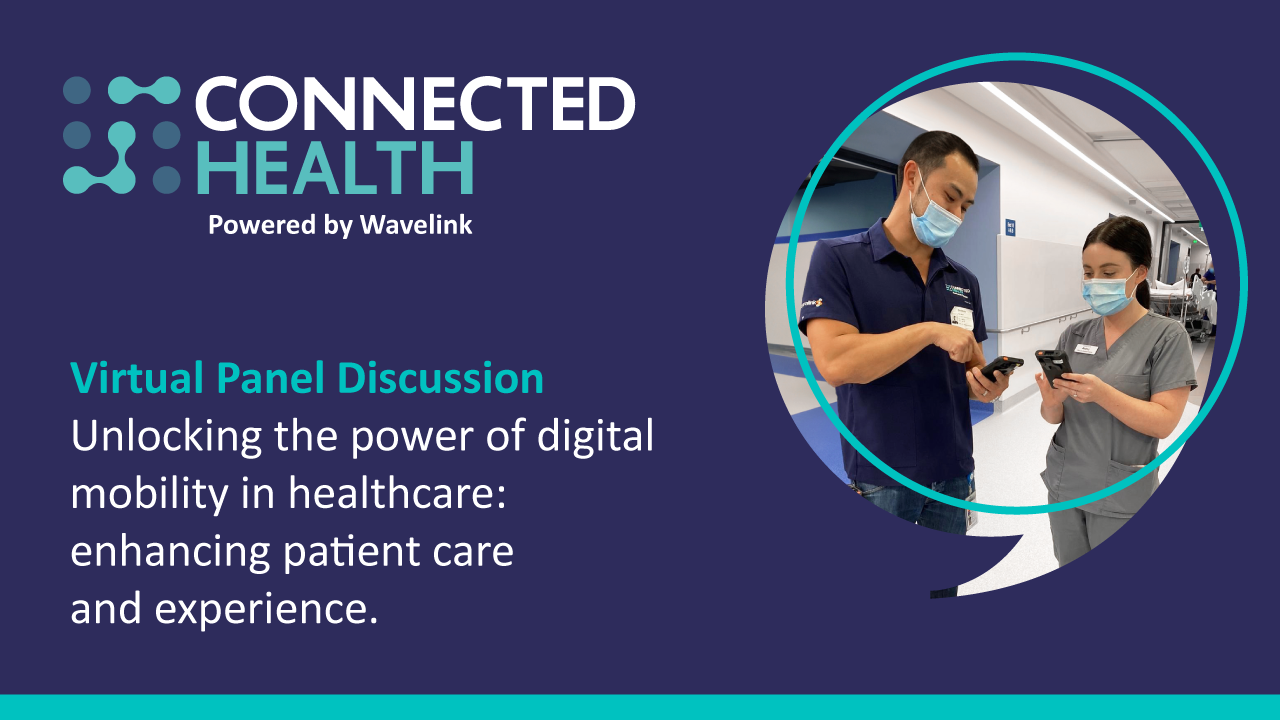Hospitals are complex environments where people, systems, devices, and machines must seamlessly integrate with each other. Unfortunately, gaps exist between the diverse systems responsible for managing workflows, monitoring machinery and assets, and facilitating communication in most healthcare settings.
Hospitals and healthcare providers are in a position where the need for enhanced efficiency is more crucial than ever. Innovation and technology are the driving forces behind digital transformation in numerous industries, and healthcare is no exception. This blog explores Connected Health’s virtual panel discussion, where Connected Health and its trusted vendors—including Spectralink, Alcatel Lucent Enterprise, SOTI, and Imprivata—discussed the transformative advantages of integrated technology in the healthcare sector.
The advantages of implementing integrated technology solutions in hospitals
As healthcare providers increasingly adopt technological solutions, significant advantages can be seen across various healthcare sectors. The benefits of harnessing integrated technology include:
- Improved efficiency and workload management: Rapid adoption of mobility technology has introduced significant changes in healthcare delivery. More streamlined processes let healthcare professionals shift their focus from administrative tasks to prioritising patient care. In particular, mobile solutions, such as smart devices, facilitate quicker responses for more efficient patient care. However, healthcare environments have unique requirements, and mobile solutions must be purpose-built for healthcare and designed to meet these specific needs.
- Customised workflows for optimal performance: Customising technology to meet hospitals’ specific needs lets healthcare organisations optimise their workflows. Any technology introduced into a hospital environment must integrate seamlessly with the existing infrastructure and accommodate future developments to ensure efficient healthcare delivery. For instance, the roadmap to integrate smart devices must also take overall clinical mobility building blocks into consideration. Such devices should integrate with building management systems and alarms to provide a holistic solution.
Additionally, the time-consuming, repetitive task of manually entering usernames and passwords to access applications can result in the loss of hundreds, or even thousands, of hours of productivity annually. As such, user identification and the implementation of a single sign-on (SSO) system are vital components to ensure secure credential management and an enhanced user experience. It’s critical that any newly introduced technology or system simplifies complexity; from patient registration to diagnosis and treatment, the right tools have the potential to reduce waiting times and enhance the overall patient experience. This both increases patient satisfaction and boosts staff morale.
- Centralised clinical workflows: Integrated systems are often the backbone of clinical workflows as they consolidate multiple platforms and give healthcare professionals a unified, seamless experience. A centralised hub reduces the need for clinicians to navigate multiple systems and enhances the overall efficiency of patient care, ensuring that everything from patient records to diagnostic tools are available at their fingertips.
- Data security and privacy: According to the latest Notifiable Data Breaches Report from the Office of the Australian Information Commissioner (OAIC), 63 data breaches were reported across the healthcare sector from January to June 2023, making it one of the top sectors for such incidents.[1] Integrated technology solutions prioritise the protection of patient data, ensuring compliance with global data protection norms. Having a single platform that ensures users access only what they need, when and where they need it—and that doesn’t allow unauthorised access to restricted information—is key. Regular security audits, encrypted communications, and strict access controls are integral features of these systems to ensure patient data remains confidential.
- System longevity and adaptability: It’s essential to choose technology solutions that are both current and adaptable. Hospitals need systems that can accommodate new treatments, methodologies, and innovations without frequent replacements or updates. Such adaptable solutions offer cost savings and ensure that hospitals stay updated with the latest medical advancements.
Tips for successful technology integration
To ensure the successful implementation of new technology, healthcare administrators should consider:
- User segmentation and trials: before full-scale implementation of any technology, it’s crucial to test its efficacy. Segmenting users and conducting pilot tests lets hospitals gather feedback and refine the technology. This step-by-step approach ensures new solutions align with the actual needs of healthcare professionals and patients.
- Training and adoption: introducing new technology can be daunting for staff. Comprehensive training sessions are vital to ensure that healthcare professionals are well acquainted with new tools. And, understanding the purpose of technology introduction can drive its acceptance and implementation.
- Phased implementation: any technological solution is only as good as its implementation, and understanding the intricacies of hospital workflows is crucial. Changes should not be rolled out all at once, instead, they need a more nuanced approach. Trialling changes in segments, gathering feedback, and making necessary adjustments ensures that the technology is aligned with the actual needs of its users: healthcare professionals. The benefits of new technology implementation can be realised through effective change management.
The future of healthcare is integrated
The integration of technology into healthcare promises patient experience and health outcome transformation. At the same time, it can enhance the efficiency and productivity of healthcare systems. When it comes to choosing integrated solutions that work for the hospital environment, it’s important to work with a provider that understands the needs of both the organisation and the broader healthcare industry, as well as the unique challenges and limitations.
Connected Health, powered by Wavelink, is at the forefront of digital transformation, delivering innovative solutions tailored for the healthcare sector. Its solutions streamline workflows for healthcare staff while ensuring the safety, security, and efficiency of their services. Our in-depth industry expertise and tailored solutions enable healthcare institutions to improve safety, mobility, workflow, operational efficiency, and cybersecurity.
To learn more about our innovative and secure healthcare solutions, watch our virtual discussion and reach out to the Connected Health team today.
1 https://www.oaic.gov.au/privacy/notifiable-data-breaches/notifiable-data-breaches-publications/notifiable-data-breaches-report-january-to-june-2023


